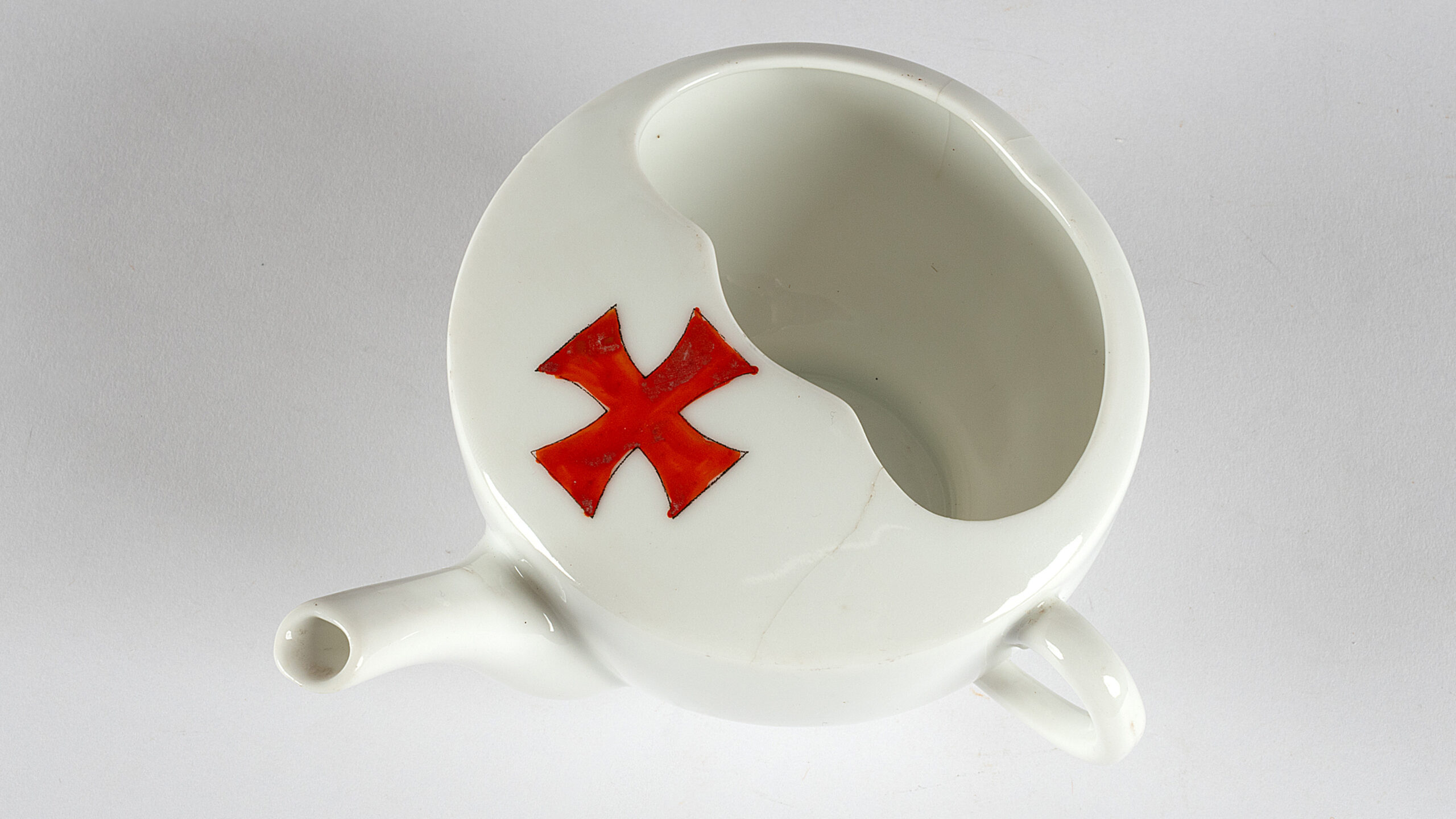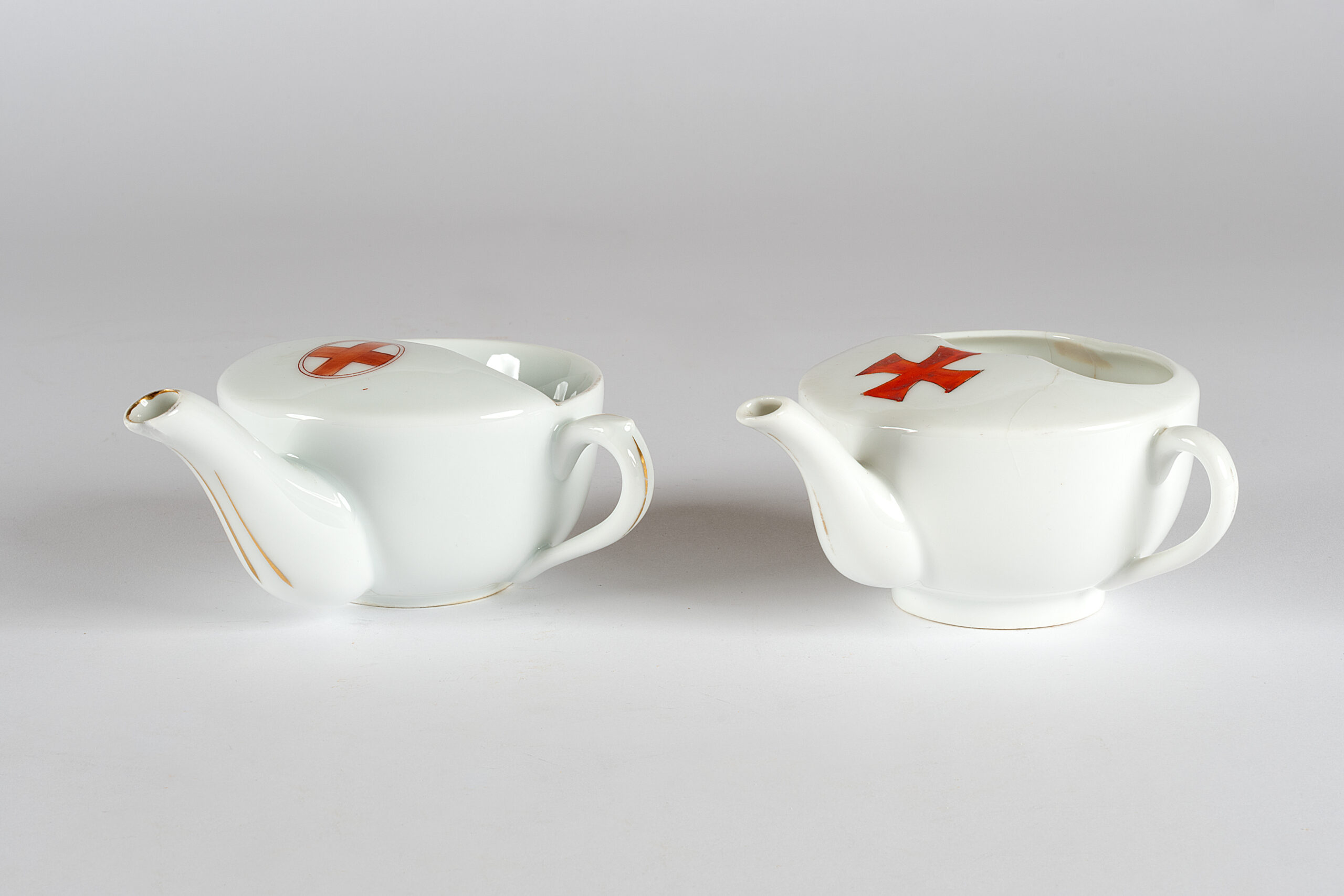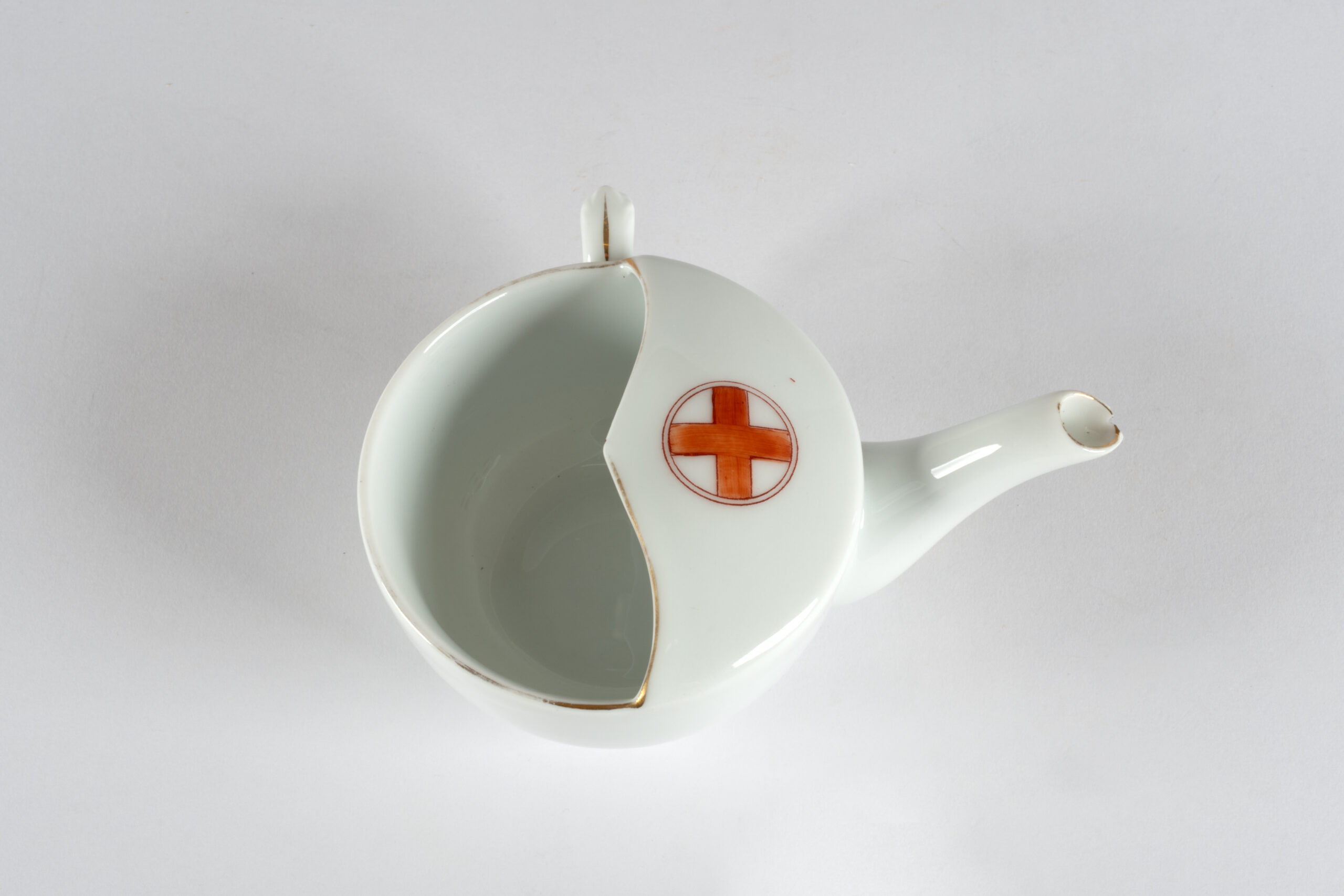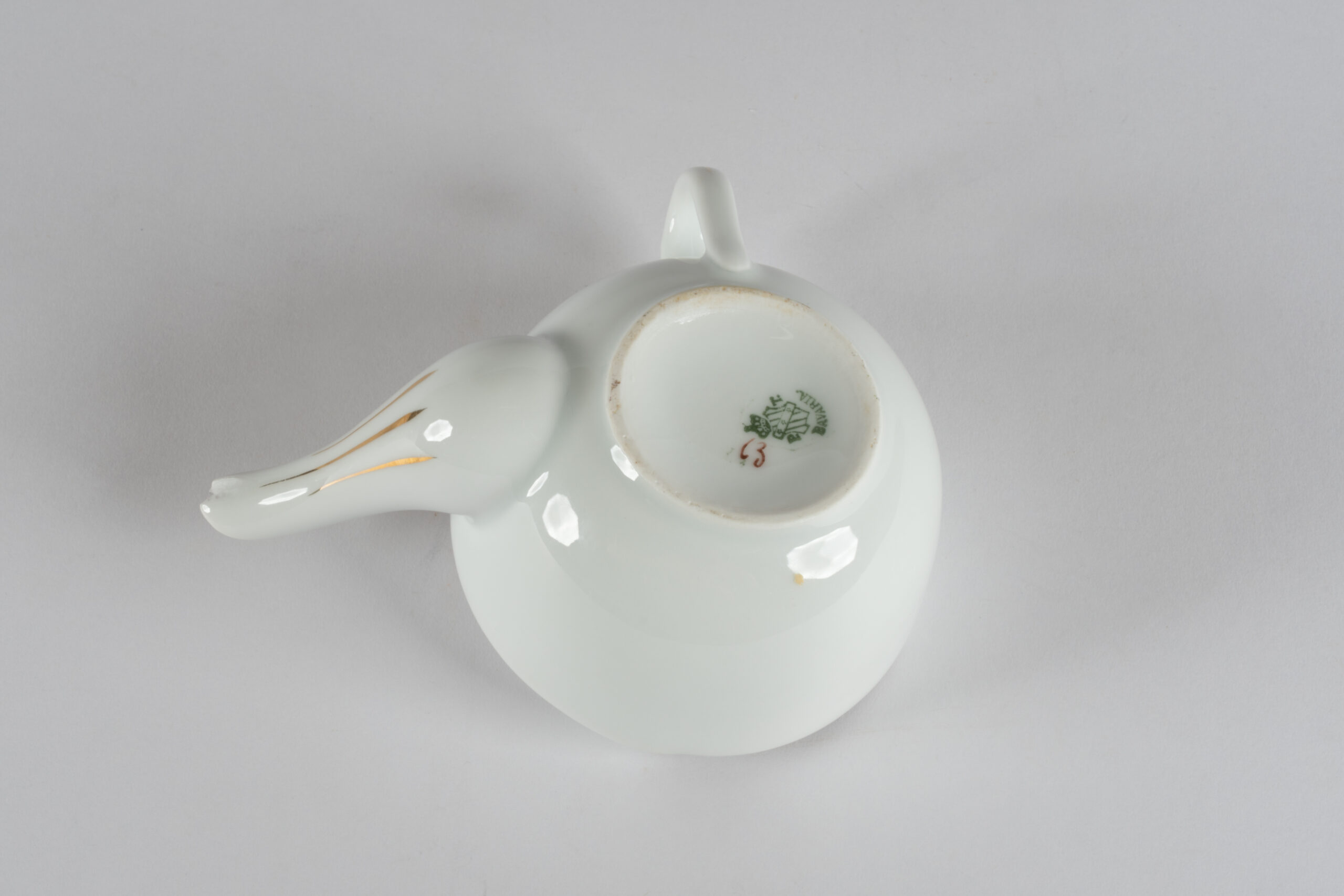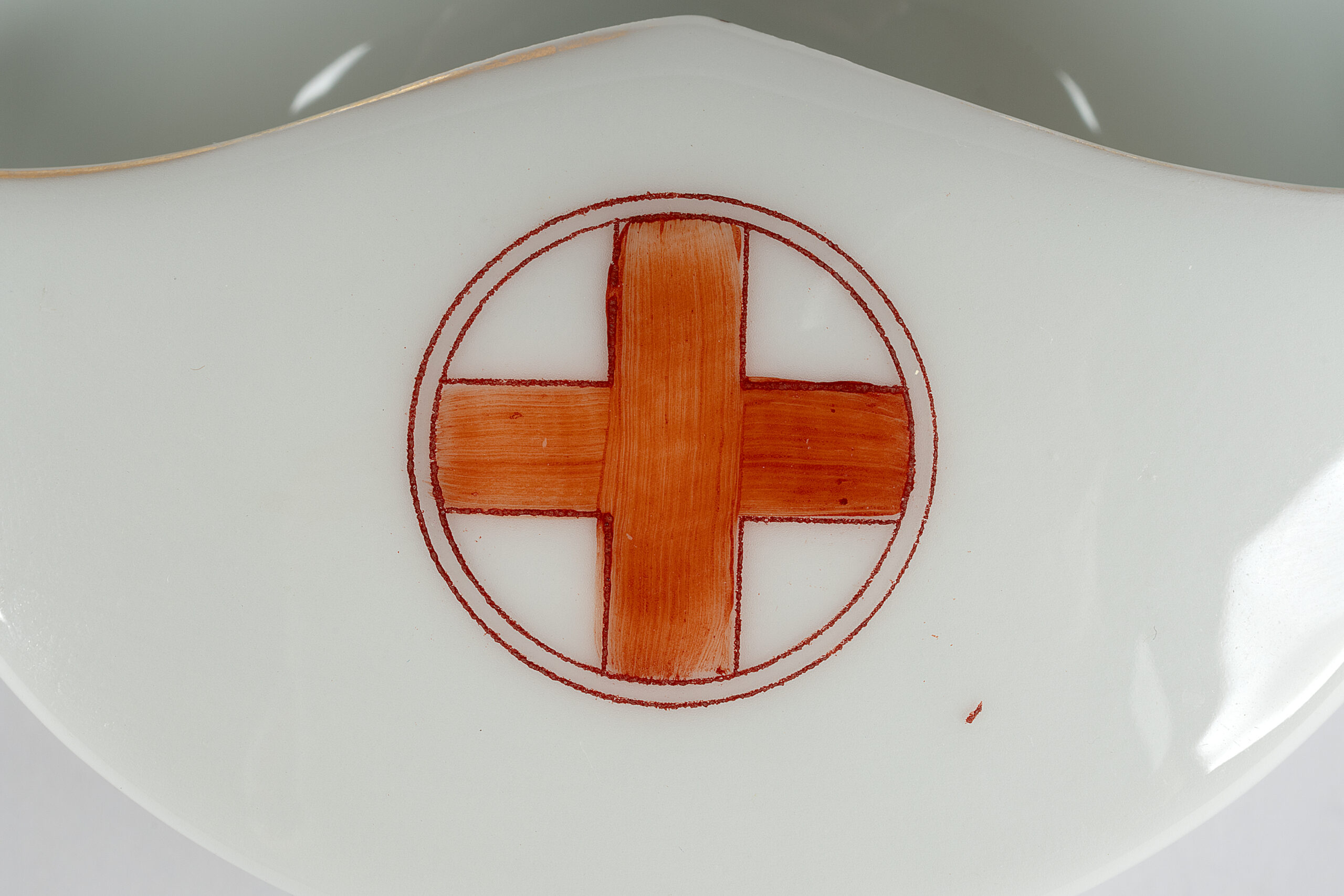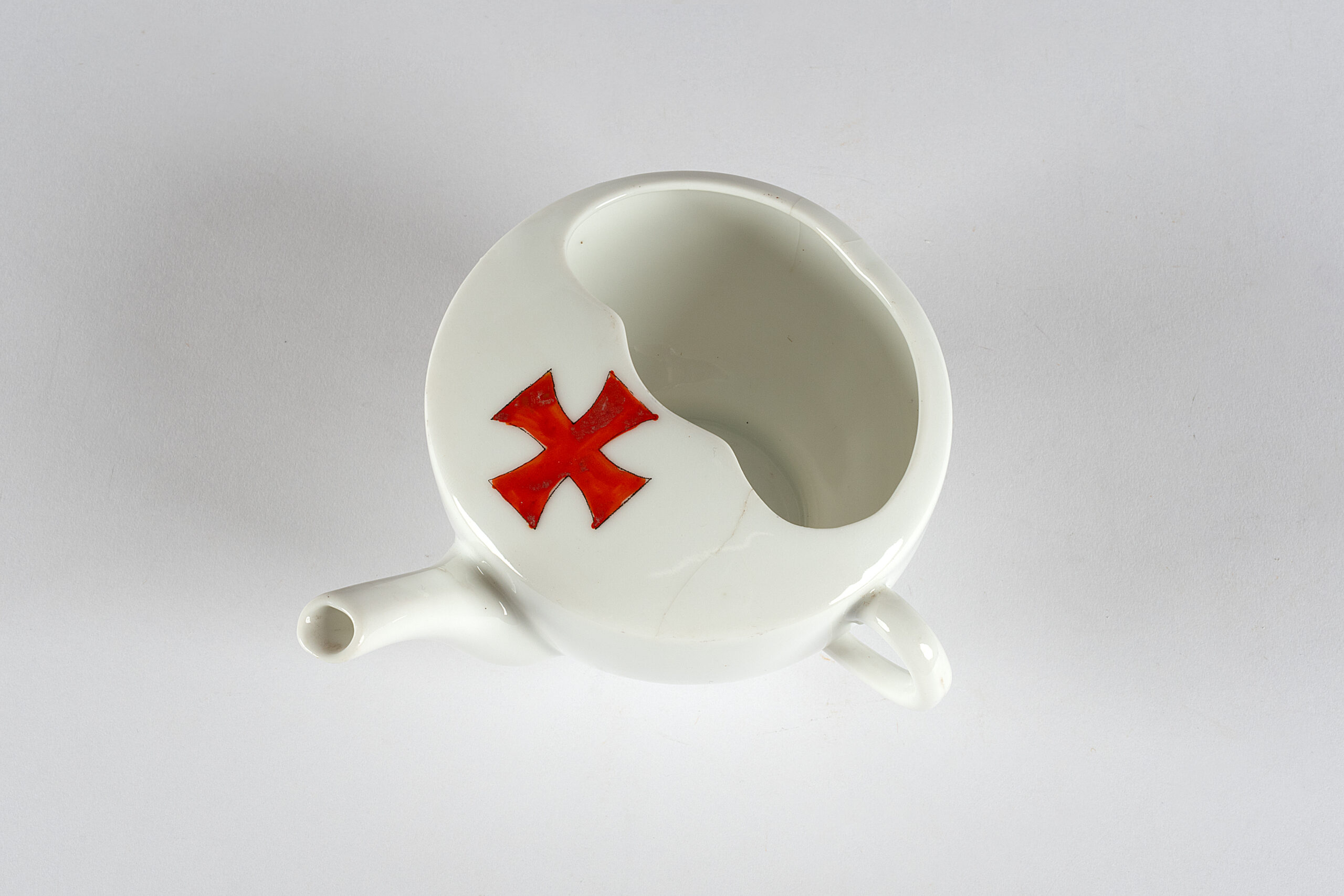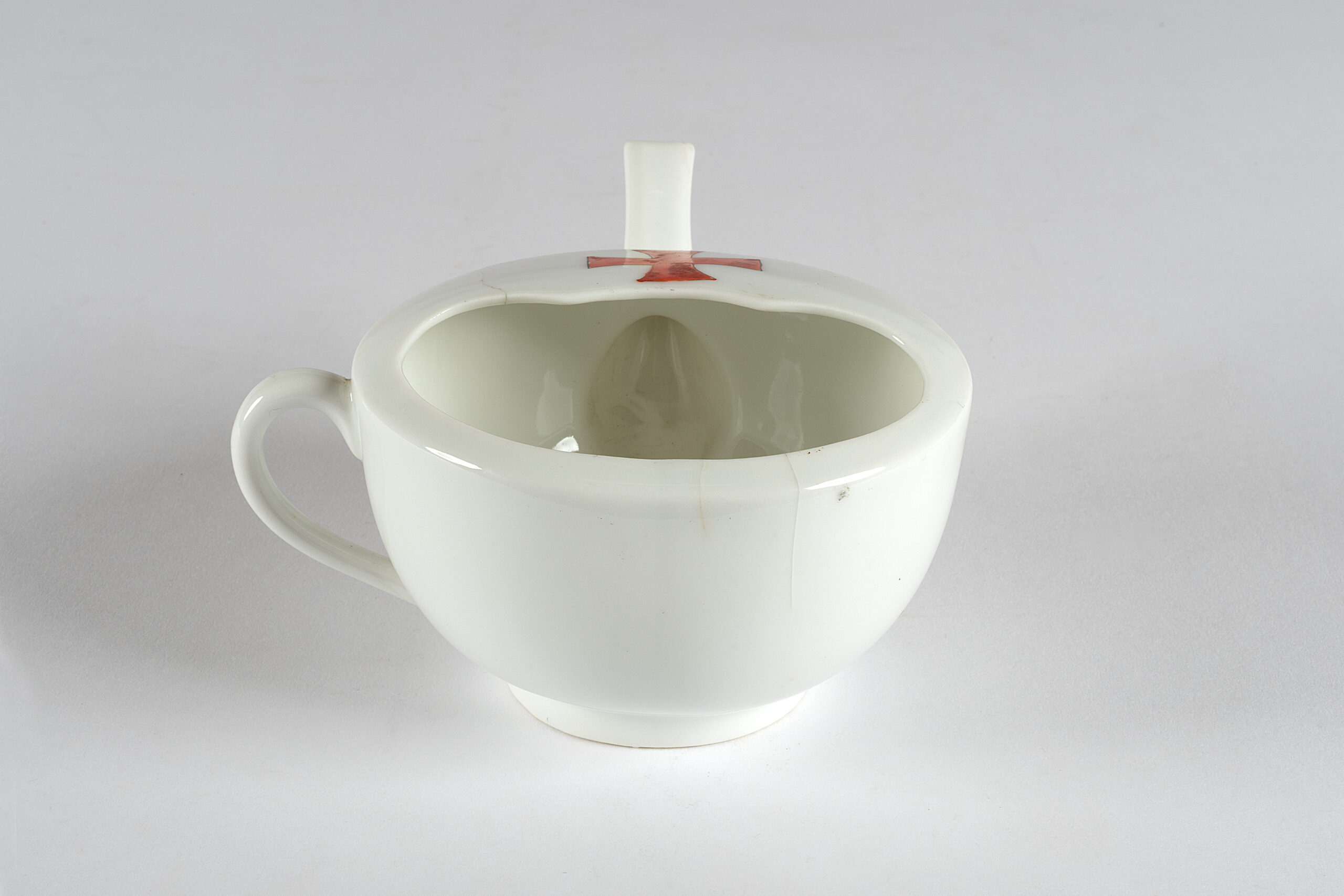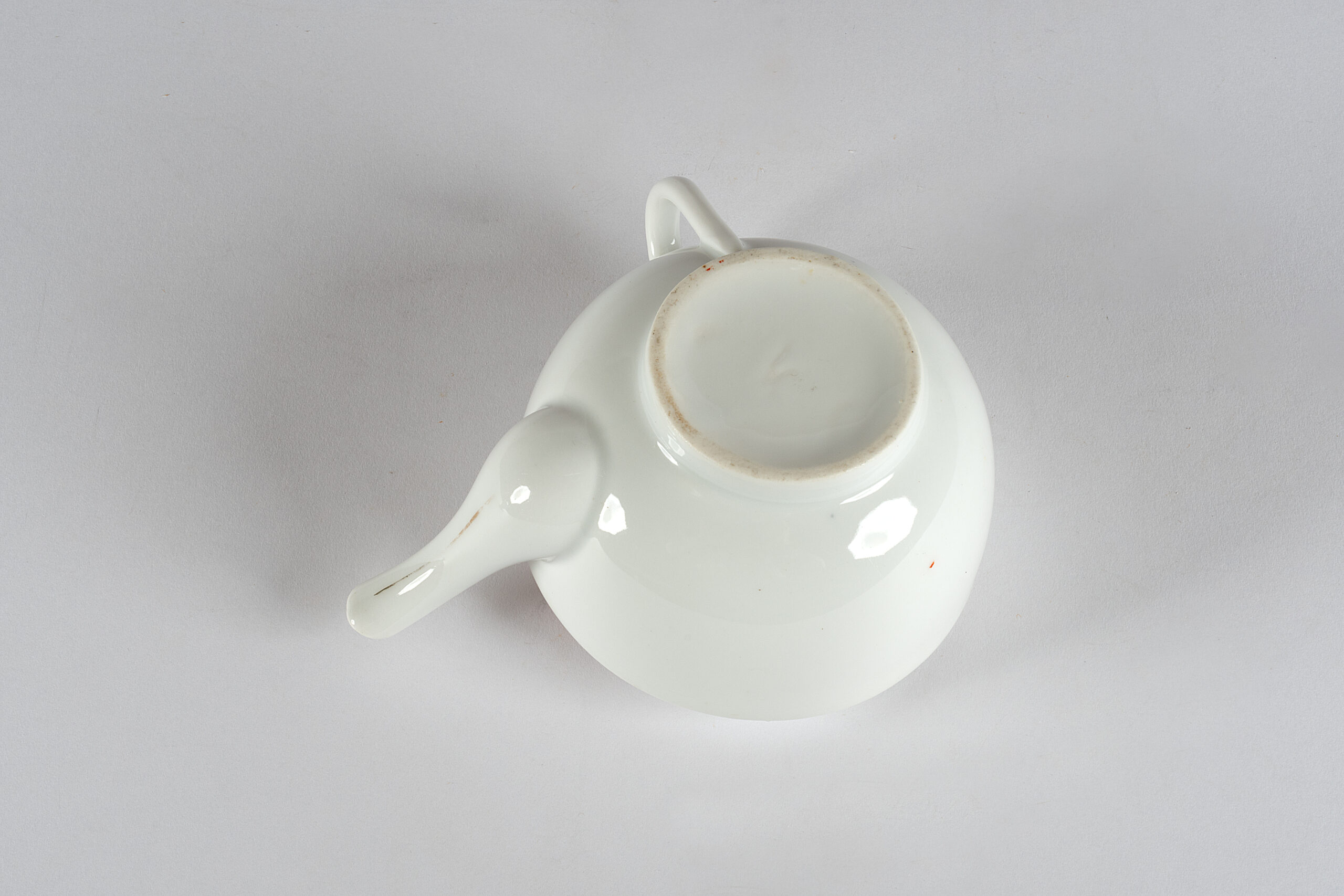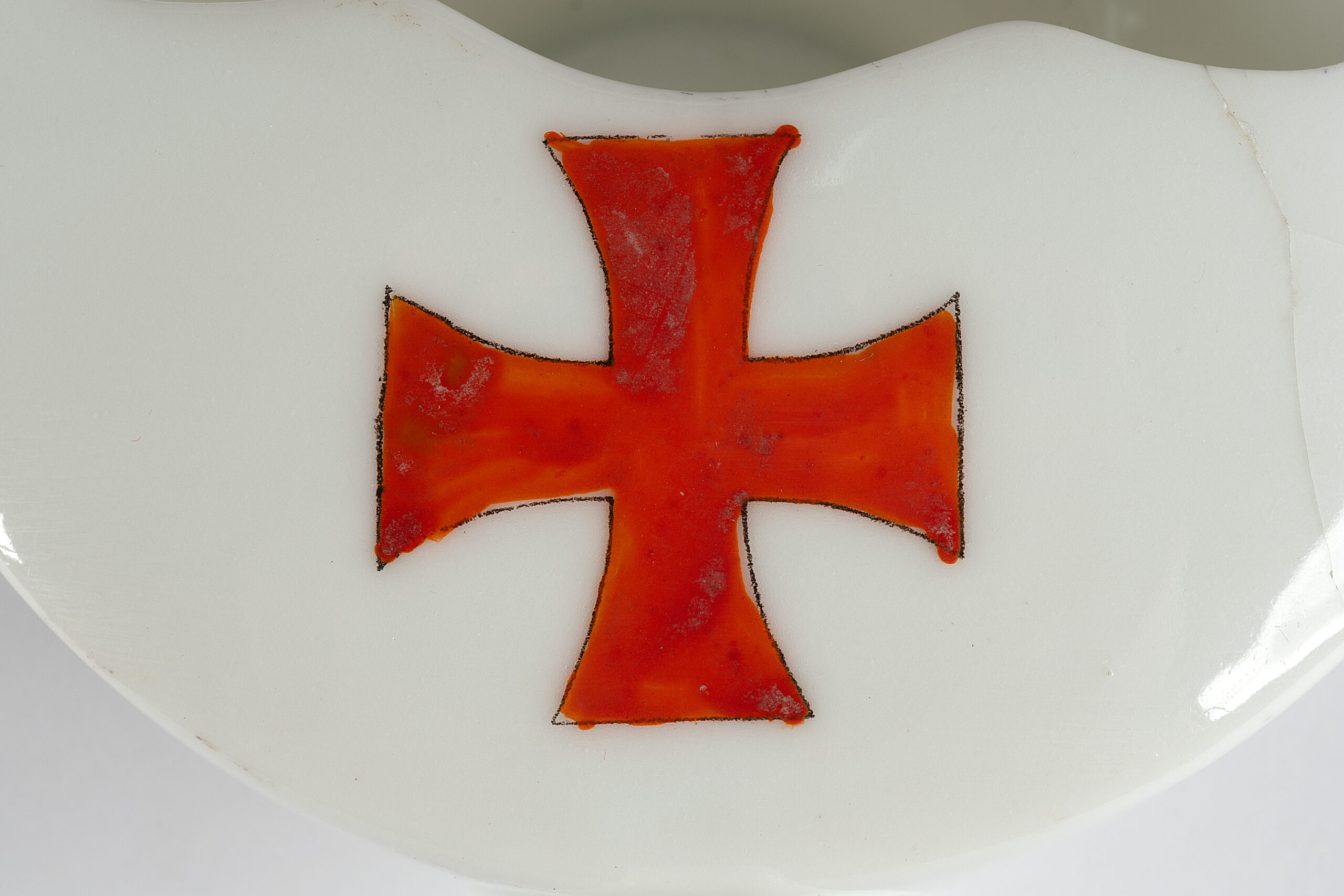Vital Vessels
Narrabri Combats the Spanish Flu
On a Friday afternoon in early February 1919, the members of Narrabri Red Cross Society called for a town hall meeting of the utmost urgency ‘for the purpose of coping with the influenza epidemic should it make its appearance in the town or district.’
The invitation was extended to all who wished to volunteer their services as ‘pneumonic influenza’ (also known as Spanish Influenza) began spreading throughout Australia.
Feeder jugs or cups, like these examples emblazoned with the symbol of the Red Cross, became essential tools for keeping those who contracted the virus nourished. Purchased by the Blythe family who worked as graziers at Boolcarrol Station (nearby Narrabri) in 1919, it was clear that the efforts being made by the local Red Cross Society and government were encouraging a community response.
Later in February, travel restrictions had been put in place throughout NSW and Narrabri was called to do the same by the Municipality of Young until the state had been declared free of infection. Though Narrabri’s remoteness and small population of around 2,000 residents was a protective factor, the location and lack of medical resources certainly created additional risks were it to spread throughout the community.
As the year progressed, regional newspapers would report on local people who had contracted or succumbed to the virus at home or in other parts of the state. When the pandemic finally reached its endpoint, it was estimated to have infected up to 40 percent of the population and claimed the lives of an estimated 15,000 Australians. Community members in Narrabri continue to volunteer for the Red Cross to this day.


